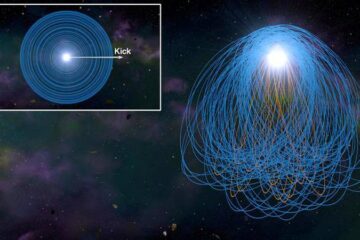The world’s northernmost nations are mapping the Arctic

It is the geological surveys in Russia, Sweden, Finland, the USA, Canada and Norway that have begun this international mapping project. Scientists from several more countries are taking part.
The Polar Year
”The work is a direct follow-up of the cooperation agreement signed by the six nations in June 2005,” Carmen Gaina, a research officer at the Geological Survey of Norway (NGU), tells us. She is responsible for compiling the geophysical data.
The agreement places several projects under the umbrella of the “Atlas of Circum-Arctic Geological Maps on a scale of 1:5 million”. The area that is to be compiled extends right down to latitude 60 degrees North. The project is part of the Polar Year and is led by the Russian Geological Research Institute (VSEGEI).
Oil and gas
”Many national geophysical databases have expanded greatly since the last compilation in 1996 and 2000. This will therefore be a valuable product for the geosciences, and also for ongoing studies of both old and new geological resources,” Carmen Gaina believes.
For instance, many petroleum experts think that 25 per cent of the world’s still undiscovered oil and gas resources are to be found in the Arctic.
The second seminar in the Circum-Arctic project was recently held in Trondheim, Norway, with participants from Russia, the USA, Canada, Sweden, Finland, Germany and Denmark.
By Gudmund Løvø
Media Contact
More Information:
http://www.ngu.noAll latest news from the category: Earth Sciences
Earth Sciences (also referred to as Geosciences), which deals with basic issues surrounding our planet, plays a vital role in the area of energy and raw materials supply.
Earth Sciences comprises subjects such as geology, geography, geological informatics, paleontology, mineralogy, petrography, crystallography, geophysics, geodesy, glaciology, cartography, photogrammetry, meteorology and seismology, early-warning systems, earthquake research and polar research.
Newest articles

Stony coral tissue loss disease
… is shifting the ecological balance of Caribbean reefs. The outbreak of a deadly disease called stony coral tissue loss disease is destroying susceptible species of coral in the Caribbean…

Hungry, hungry white dwarfs
… solving the puzzle of stellar metal pollution. Dead stars known as white dwarfs, have a mass like the Sun while being similar in size to Earth. They are common…

Web platform and app aim to improve quality of life for people with Parkinson’s disease
Parkinson’s disease is one of the most prevalent neurodegenerative conditions. It causes motor impairments such as tremors, slow movement, muscle stiffness, and balance problems. The individual course of the disease…





















